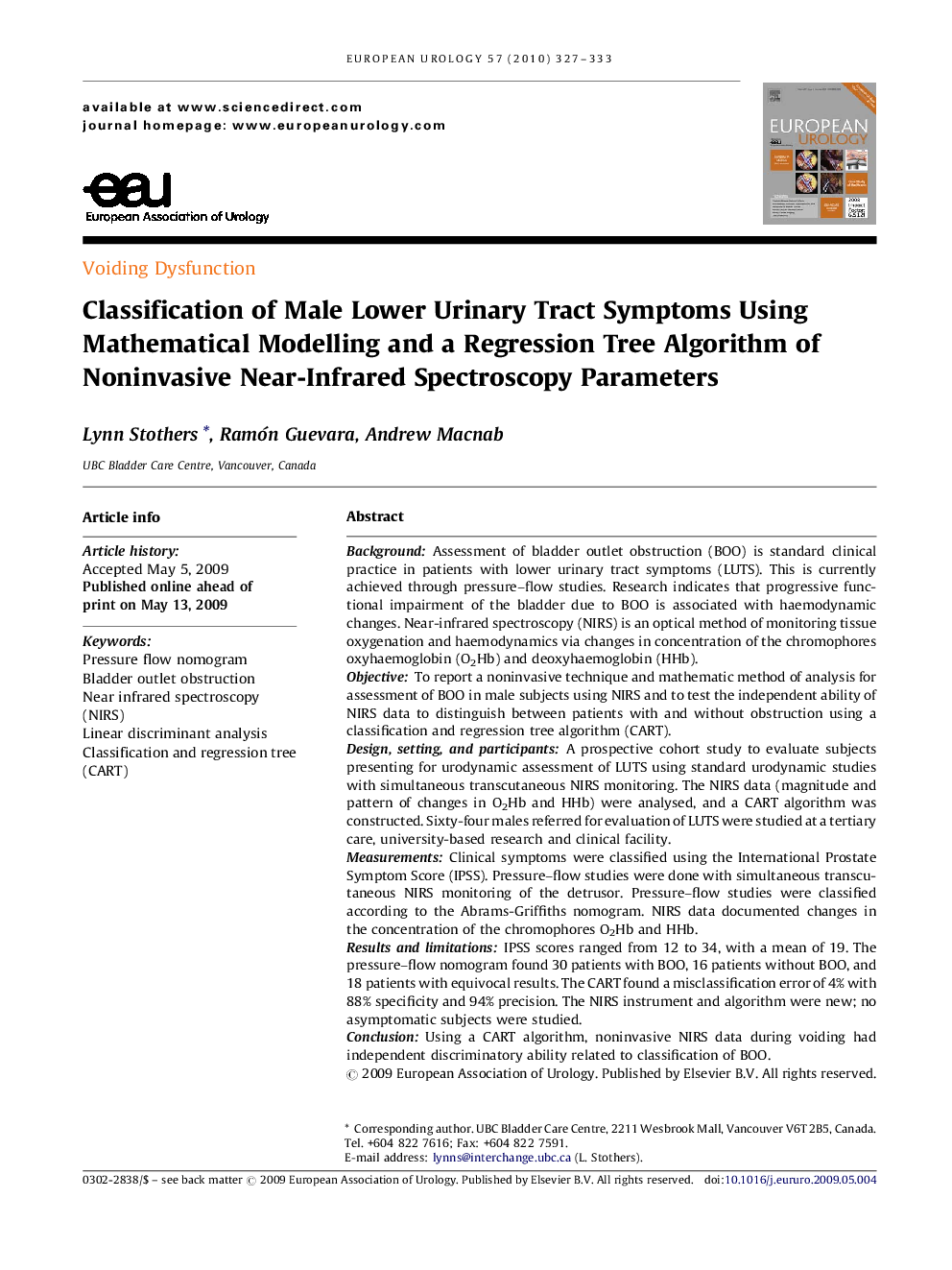| کد مقاله | کد نشریه | سال انتشار | مقاله انگلیسی | نسخه تمام متن |
|---|---|---|---|---|
| 3923008 | 1253005 | 2010 | 7 صفحه PDF | دانلود رایگان |

BackgroundAssessment of bladder outlet obstruction (BOO) is standard clinical practice in patients with lower urinary tract symptoms (LUTS). This is currently achieved through pressure–flow studies. Research indicates that progressive functional impairment of the bladder due to BOO is associated with haemodynamic changes. Near-infrared spectroscopy (NIRS) is an optical method of monitoring tissue oxygenation and haemodynamics via changes in concentration of the chromophores oxyhaemoglobin (O2Hb) and deoxyhaemoglobin (HHb).ObjectiveTo report a noninvasive technique and mathematic method of analysis for assessment of BOO in male subjects using NIRS and to test the independent ability of NIRS data to distinguish between patients with and without obstruction using a classification and regression tree algorithm (CART).Design, setting, and participantsA prospective cohort study to evaluate subjects presenting for urodynamic assessment of LUTS using standard urodynamic studies with simultaneous transcutaneous NIRS monitoring. The NIRS data (magnitude and pattern of changes in O2Hb and HHb) were analysed, and a CART algorithm was constructed. Sixty-four males referred for evaluation of LUTS were studied at a tertiary care, university-based research and clinical facility.MeasurementsClinical symptoms were classified using the International Prostate Symptom Score (IPSS). Pressure–flow studies were done with simultaneous transcutaneous NIRS monitoring of the detrusor. Pressure–flow studies were classified according to the Abrams-Griffiths nomogram. NIRS data documented changes in the concentration of the chromophores O2Hb and HHb.Results and limitationsIPSS scores ranged from 12 to 34, with a mean of 19. The pressure–flow nomogram found 30 patients with BOO, 16 patients without BOO, and 18 patients with equivocal results. The CART found a misclassification error of 4% with 88% specificity and 94% precision. The NIRS instrument and algorithm were new; no asymptomatic subjects were studied.ConclusionUsing a CART algorithm, noninvasive NIRS data during voiding had independent discriminatory ability related to classification of BOO.
Journal: European Urology - Volume 57, Issue 2, February 2010, Pages 327–333